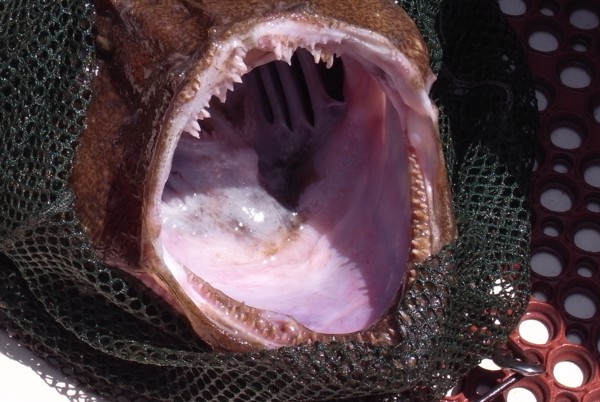 |
| Nice Set of Teeth |
We had another great trip to the Stolt this Saturday. Once we cleared the inlet, the seas were flat with just a slight breeze from the north. Reaching the top of the wreck we easily had 40-50 ft of visibility. Again the top was quite warm with the thermocline starting a 70. On the bottom the conditions drop to 30 ft of visibility, and about 44 degrees. On the first dive, I headed out in the sand in search of scallops. While I ran into lots of skates, winter flounder, and a number of small bugs, there were no large scallops in range of my reel. I made a sweeping arc back to the wreck, but still no scallop encounters. Not even a moon snail to be found. After spotting a few small lobster, and many more flounder, I started back up to the line.
Back on board, someone mentioned seeing a large monkfish along the side of the wreck. With tog out of season, and my first jumping castle scallop run coming up empty, I opted to have a go with another monkfish aka goosefish. I dropped down the line and started hunting the creature. The usual flounder, ling, eelpout, and small lobster were readily seen. No Monkfish in sight. Doubling back, to the break, I soon spotted him. A battle soon ensued, and the creature was stuffed into my large catch bag. He did not seem happy about the situation. He barely fit in, and may have been cramped. On the way up the line I made sure to keep my hands away from his gaping maw, and keep his slimy flesh away from my drysuit.
We were soon back at the dock, and I had the unenviable task of cleaning this beast. Many people stopped by to inquire about the creature. Most passers by had no idea what it was. The process of cleaning took a while, and made quite a smelly mess. Still the flesh is quite good, and this guy was large enough for a few meals.
If you see a monkfish on the bottom remember two things: they fight back, someone will have to clean him.